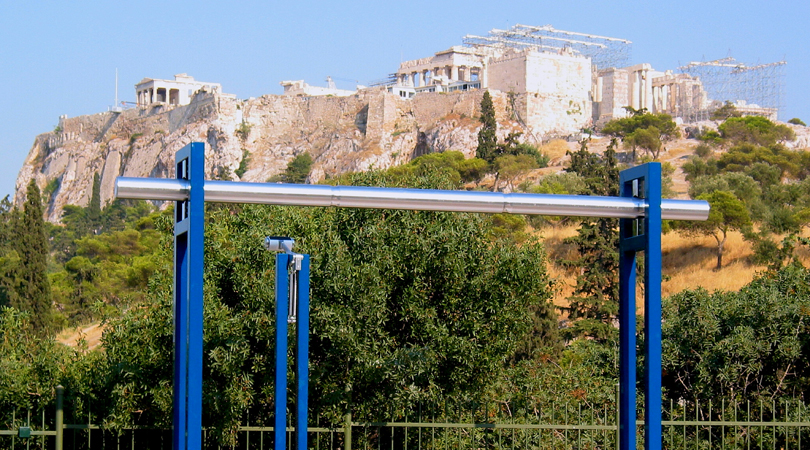In a nation renowned for millennia-spanning history and world-shaping cultural heritage, the 2004 Summer Olympics in Athens marked something of a homecoming for the athletic festival. Greece was the birthplace of the ancient Olympiad and served as the inaugural host of the rekindled Olympic Games in 1896. Now, taking the torch for only the second time in the modern era, Greece sought to deliver an Olympics that bridged both ancient traditions and modern achievements.
Among the many symbols created for the global event, one stands out for its elegant blend of artistic vision and historical resonance: the Olympic Bell, designed by American artist Paul Matisse – grandson of legendary French painter Henri Matisse, son of New York gallery owner Pierre Matisse, and stepson of radical artist Marcel Duchamp. Carving out his own artistic path and perspective, Mr. Matisse is best known for innovative kinetic sculptures and sound installations that play with the idea of interactivity, or how both the environment and audience engage with his work.
Background to the Olympic Bell
For the 2004 Summer Olympics in Athens, Mr. Matisse was commissioned by the “Look of the City” Organizing Committee for the Olympic Games to create a monumental sculpture symbolizing unity, peace, and the enduring spirit of the Games. Drawing inspiration from the ancient and the modern, the local and the universal, he settled on the humble bell – long a symbol of communication and gathering, calling people together for important happenings and announcements. For the Olympics, a bell signifies the coming together of nations in a spirit of competition and camaraderie.

Image: The Olympic Bell, created by American artist Paul Matisse for the 2004 Summer Olympics in Athens, Greece, at Old Frog Pond Farm in Harvard, Massachusetts, where it is now installed as part of an outdoor sculpture exhibit. Courtesy: Paul Matisse.
The result was a minimalist sculpture built of steel and powder coated in a brilliant Grecian blue. Between these azure uprights suspends a horizontally-aligned polished aluminum tubular bell that’s sounded on demand by the passerby, who activates the striking hammer by pulling on a heavy rope. The design reflects a harmony of form and function, embodying the Olympic ideals of balance, grace, and strength. Its deep, resonant tones serve as a reminder of the shared values and aspirations the Olympics represent.
From Athens to Harvard
The tubular bell was installed along a pedestrian walkway at Thesseion Square in Athens, near the entrance to the Acropolis, for the duration of the Games. The bell's harmonious tone, activated by athletes, spectators, and residents alike, created a sense of unity and shared experience and could be heard reverberating for several minutes after each strike.
Mr. Matisse's Olympic Bell was more than just a temporary installation. The bell became a lasting symbol of the 2004 Summer Olympics and continues to ring to this day. In 2016, the Olympic Bell was installed at Old Frog Pond Farm in Harvard, Massachusetts, as part of an outdoor sculpture exhibit, where it remains accessible to the public to ring.
Cover image: The Olympic Bell, created by American artist Paul Matisse for the 2004 Summer Olympics, installed along a pedestrian walkway at Thesseion Square in Athens, Greece, with the Acropolis in the distance. Courtesy: Paul Matisse.

